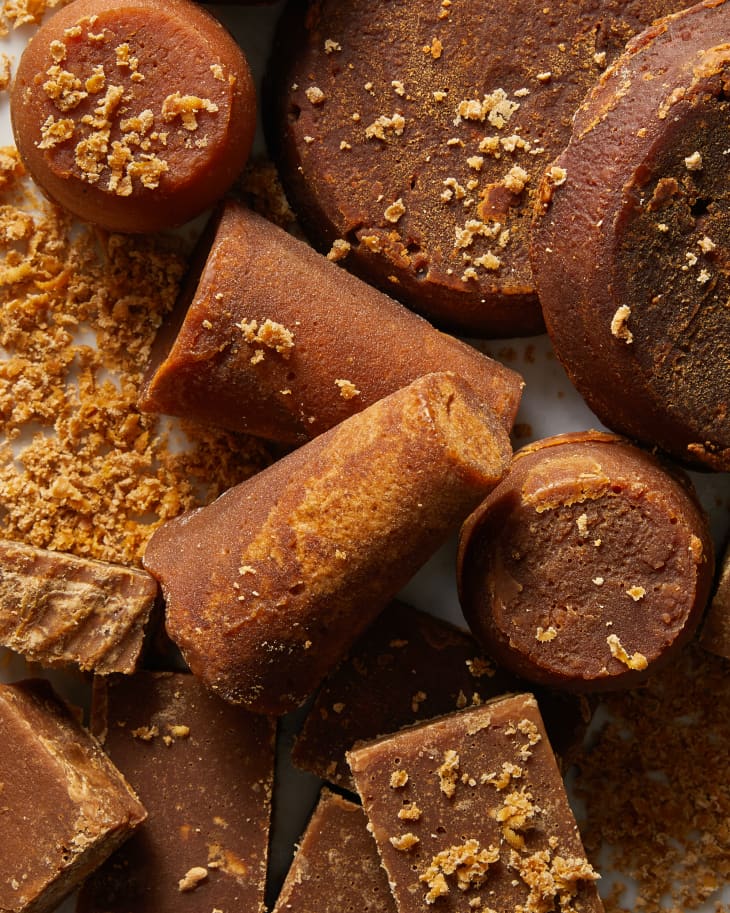All About Piloncillo — What You Should Know About the Latin American Staple Ingredient
Most people know that sugar comes in all sorts of different flavors, shades, and textures. The most common form of sugar in the United States is probably the very fine, sparkly, white granules we add to coffee or cake batter. There is also super-rich light and dark brown sugar, coarse demerara sugar, and golden caster sugar. And then there is piloncillo, an unrefined cane sugar found throughout Latin America.
It’s also known more generally throughout Latin America as panela. The most important questions people may have about it are, what exactly is piloncillo and how is it different from these other types of sweeteners?
What Is Piloncillo?
Piloncillo refers to a product more widely known in the Spanish-speaking world as panela. It’s a variety of unrefined cane sugar that is primarily used in cuisines of Latin America, including Mexico and Central America. Piloncillo is commonly used to make desserts, cookies, and sweetened drinks like ponche navideño and champurrado, a masa-based Mexican drink. You’ll also find it in savory foods like salsa negra and calabaza en tacha.
To make piloncillo, sugarcane is boiled until it thickens. The mixture is then poured into a mold and allowed to harden.
It’s important to note that panela is referred to as piloncillo exclusively in Mexico. This is partially because in Mexico, panela refers to a type of white cheese (queso panela) used commonly in the country.
In the U.S., piloncillo is sometimes called “Mexican brown sugar.” More often, however, you will see the product labeled as both “panela” and “piloncillo” as well as “brown cane sugar.” And panela is known as raspadura and rapadura in various other Latin American countries.
The most recognizable characteristic of piloncillo is that it’s sold in dark brown, rock-solid blocks in a variety of shapes. You will most likely find piloncillo sold in the shape of a cone and wrapped in plastic. This is because that’s the shape of the mold that the boiled sugar cane juice is poured into. In a number of countries, however, the name piloncillo means “little loaf,” which references the other shapes that you will find piloncillo sold in: small squares, round loaves, or blocks.
Is Piloncillo the Same as Brown Sugar?
No, piloncillo is not really the same thing as brown sugar, as it is known in the U.S. Piloncillo (panela) is a variety of unrefined cane sugar that is boiled and then thickened and allowed to harden. This product is sold in firm blocks in the shape of cones, rounds, and squares and used in many Mexican and Latin American dishes.
Brown sugar, on the other hand, refers to white granulated sugar that is combined with molasses (the thick, dark liquid left over from boiling sugar cane or beet juice). It’s molasses that gives brown sugar its rich and maple-like flavor. The molasses in brown sugar also makes for very soft and chewy desserts. Although piloncillo and brown sugar are brown in color, they are not technically the same thing.
What Can I Substitute for Piloncillo?
Although they are not technically the same product, brown sugar can be a great substitute for piloncillo or panela. Both piloncillo and brown sugar have rich flavors that also make for chewy desserts like oatmeal cookies as well as sweetened drinks. Unlike piloncillo, though, light and dark brown sugars are soft and crumbly and can be scooped with a measuring cup.
How Do You Eat Piloncillo?
Because piloncillo comes in a very firm block rather than soft granules, you’ll need to either break it down into smaller pieces or melt it over a heat source. You can break down piloncillo by chopping it carefully into medium-sized chunks or slivers with a sharp knife. Or you can grate piloncillo on the holes of a box grater or a microplane. Using a grater to break down piloncillo can also make it easier to measure and use in recipes.
